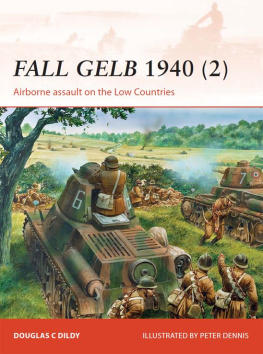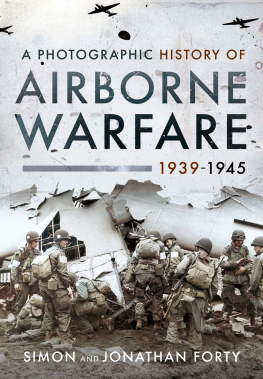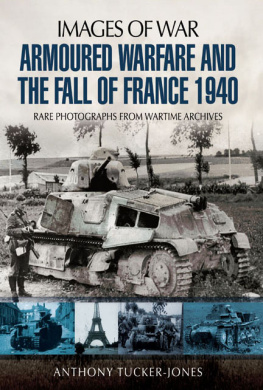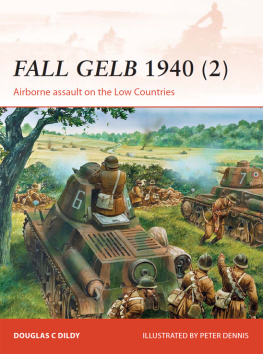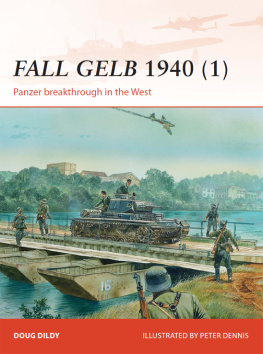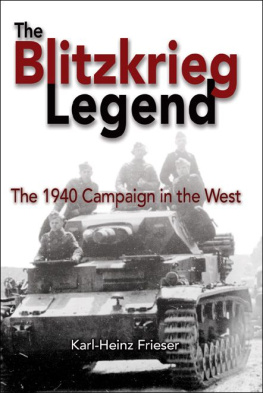CAMPAIGN 265
FALL GELB 1940 (2)
Airborne assault on the Low Countries
| DOUGLAS C DILDY | ILLUSTRATED BY PETER DENNIS |
Series editor Marcus Cowper
CONTENTS
ORIGINS OF THE CAMPAIGN
The neutral states have assured us of their neutrality This assurance is sacred to us and as long as no other nation violates their neutrality, we will also honour it with painstaking punctuality.
Adolf Hitler, 1 September 1939 the day Germany invaded Poland
On 27 September 1939, only hours after the surrender of the Polish Army besieged at Warsaw, Adolf Hitler met with the commanders-in-chief of the three Wehrmacht services and announced his intention to invade France through Belgium and the Dutch appendix of Maastricht. The Fhrers objective was to reach the Channel coast in order to defeat the French Army and the forces of the Allies fighting on their side, and at the same time to win as much territory as possible in Holland, Belgium, and Northern France, to serve as a base for successful prosecution of the war against England. He was anxious to quickly and decisively end the war that on the Western front at least had already expanded beyond his initial designs.

Hitler and his Oberkommando der Wehrmacht (OKW) and Oberkommando des Heeres (OKH) generals in conference at the planning map table. To Hitlers right is Franz Halder, the OKH chief of staff and architect of the Fall Gelb plan; to his immediate left is Generaloberst Walther von Brauchitsch, the chief of the army (OKH), with Generaloberst Wilhelm Keitel, the chief of the OKW, looking on. (IWM HU75533)
To achieve this aim and to do so before winter, in little more than three weeks the OKH (Oberkommando des Heeres, the army high command), under direction of General der Artillerie Franz Halder, developed Aufmarschanweisung Fall Gelb (Deployment Directive, Case Yellow). It was a hastily prepared improvisation calling for an offensive directly through Belgium and southern Holland, with the initial assaults swinging around the north and south sides of the fortress-ringed city of Lige before driving to the coast.
When the initial draft was issued on 19 October, it naturally employed only those German forces then arrayed in the West. Nine days earlier Generaloberst Fedor von Bock and his Heeresgruppe Nord (Army Group North) staff, fresh from their victorious conquest of northern Poland, arrived at Dsseldorf and was retitled Heeresgruppe B. Generaloberst Gerd von Rundstedts Heeresgruppe A was established at Koblenz a fortnight later.
Three armies deployed along the German frontier opposite Belgium and southern Holland. After some reorganization these became, from north to south, Generaloberst Walter von Reichenaus Armeeoberkommando (AOK) 6, Generaloberst Gnther Hans von Kluges AOK 4, and General der Kavallerie Maximilian Freiherr von Weichs zu Glons AOK 2. These were soon reinforced by General der Artillerie Georg von Kchlers AOK 18. In total these comprised 43 divisions, including nine panzer and four motorized infantry.
Luftwaffe Generalmajor Hans Jeschonnek, the chief of staff of the ObdL (Oberbefehlshaber der Luftwaffe), was the avid proponent for including the subjugation of the Netherlands, in its entirety, in the Fall Gelb plan. Once authorized, it was up to the Luftwaffe to devise the means an airborne invasion for its accomplishment. (NARA)
Heavily mechanized, Reichenaus AOK 6, followed by AOK 18, was to attack through the Maastricht Appendix the sliver of the Netherlands on the east bank of the Maas River, extending south between Belgium and Germany, just north of Lige while Kluges AOK 4, followed by AOK 12, was to bypass Lige to the south and then merge with Reichenaus army in central Belgium for the drive to the Channel coast. With another 22 infantry divisions, Heeresgruppe A was to provide flank coverage to the south.
Alarmed at the absence of Holland from the territory to be occupied, Luftwaffe Chief of Staff (COS) Generalmajor Hans Jeschonnek met with Hitler on 30 October to object that, if no Dutch territory is occupied, the English will take possession of Dutch airports. Initially Hitler was unmoved, but 12 days later Jeschonnek was back, protesting that Holland must be occupied, because England will violate Hollands air sovereignty and then we will not be able to protect the Ruhr area. Constantly worried that the British might pre-empt his initiative by forcibly taking small neutral European nations into its sphere, Hitler ordered his personal military staff, the OKW, to direct the OKH to include the conquest of Holland in their Fall Gelb planning. At first, only the three divisions of AOK 18s X Armeekorps (AK) were assigned, but in the January modification to Fall Gelb Kchlers entire AOK 18 was given the mission to subjugate the Netherlands.
Meanwhile, the OKH recognized the difficulty of the proposed advance into Belgium, especially the crossings of the Meuse/Maas River. To secure bridgeheads and to place forces in the rear of the enemy, the Army staff added the Luftwaffes neophyte, ad hoc airborne corps to land at Ghent and block Allied mobile forces, and to seize Meuse River crossings at Namur and Dinant, Belgium.
These revisions were under consideration when, on 10 January 1940, the airborne portion of the plan landed in the laps of the Belgian border forces a Messerschmitt Bf 108 Taifun (Typhoon) courier aircraft force-landed in error at Mechelen-sur-Meuse, on the Belgian side of the river. On board was Major Helmuth Reinberger, the commander of the Luftwaffes Fallschirmjger (paratrooper) school at Stendal, who was carrying the entire airborne annex of the Fall Gelb plan. Temporarily assigned as communications officer to Fliegerfhrer 220 (the Luftwaffes coordinating HQ for airborne operations) to help integrate the Luftwaffes air assault forces into the armys invasion plans, Reinberger was headed for a planning conference in Kln. To avoid the winter railway delays being experienced in the Ruhr, Major Erich Hoenmanns, a reserve officer in charge of camouflaging the small Loddenheide airfield near Mnster, offered him a flight in a new Taifun. Against the stringent German security regulations, Reinberger accepted.
Approaching the Rhine, Hoenmanns encountered winter fog, wandered off course and when he attempted to switch fuel tanks, he accidentally shut off the fuel completely (this was only his second flight in a Bf 108), forcing a dead stick landing on the west side of a wide river he thought was the Rhine. It was the Maas, and before Reinberger could destroy the contents of his dispatch case, both majors and the airborne plans for Fall Gelb were collected by Belgian police. Once Belgian King Lopold realized the papers significance, to elicit guarantees of British and French assistance, a synopsis of the captured information was shared with the would-be allies.
The subsequent investigation, primarily involving the German military attachs interview of the two majors in the Belgian jail, falsely assured the OKW that the dispatch case burned for certain. Meanwhile, the entire concept of operations was under thorough reconsideration by Hitler, Halder, and the OKH staff. By 18 February it was so completely revised that it totally reversed the roles, dispositions and objectives of the German forces. Watching his plan unfolding in various command post exercises Halder became convinced that Heeresgruppe A needed an additional, armoured army and, since the potential for a breakthrough was much greater by crossing the Meuse near Sedan than by assaulting the much more heavily defended Maas around Lige, the Panzers should be concentrated in the south, approaching through the Ardennes.
Next page
